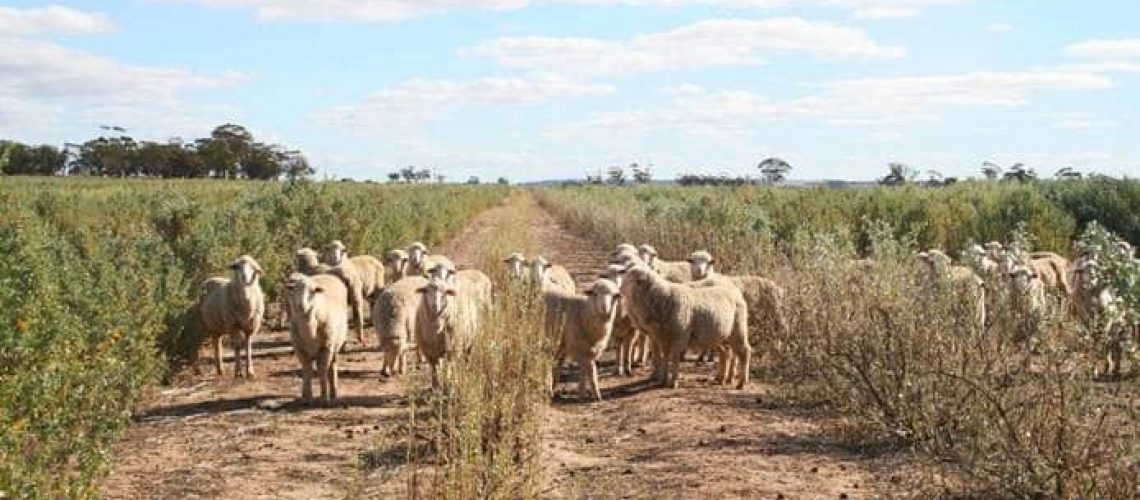At the farm level, the economics of farming practices clearly do play an important role in shaping what farmers choose to do.
Many factors influence farmers’ decisions about the adoption of new landcare practices, but where major changes are required, commercial reality is likely to be the decisive influence. Even with intervention, salinity will still cost farmers. Strategies and action plans that have been developed in the past have failed, and the government is yet to fully understand the effects and the extent to which salinity can and will affect agriculture. These examples may leave farmers wondering if there is anything they can do that will result in a noticed different in their on farm production.
The large scale land clearing (18 million of the 21 million ha of native vegetation) that followed European settlement has caused the water table to rise across much of the wheatbelt of Western Australia, through the removal of deep-rooted native vegetation, to grow annual crops that have shallow-root systems, bringing salt to the surface.
Salt-sensitive vegetation is slowly killed by the rising water table, until increasing levels of salts cause patches of bare ground known as scalds which are effectively environmental death zones for both farmers and the native fauna and flora.
To a greater or lesser extent, all farmers are willing to make financial sacrifices for the good of their land and the environment, but they also must give priority to remaining in business and meeting other family and social objectives.
Some facts and figures: https://audit.wa.gov.au/reports-and-publications/reports/management-of-salinity/key-findings/
- Estimated that between 1 and 2 million hectares (up to 10% of total land) in the agricultural regions of the South West are affected’
- ‘The extent of salinity affected land in the South West is expected to more than double over the next 50 to 100 years to around 5.4 million ha. Of this, 4.5 million ha is agricultural land’.
- ‘Since 2009-10 the opportunity cost of lost agricultural production from dryland salinity has been over $500 million a year’
- Cost $519 million per annum in lost agricultural production
- ‘25% of cleared agricultural land will be at risk of salinity in the long term’ – making 25% of agricultural land unproductive and inhabitable – except for saltbush
- ‘By the 1990s dryland salinity was considered the greatest economic and environmental threat to the State’.
- ‘DPIRD estimates that over 80% of the Wheatbelt would need to be replanted with deep rooted trees and shrubs to stabilise and lower water tables. Water tables would take decades to fall and the current extent of broad scale agriculture would no longer be possible’
- ‘Conservation estimated that 850 endemic flora and fauna species were at threat of extinction as a result of dryland salinity’ – SW is a biodiversity hotspot therefore this would impact greatly
What has been required is to a scientific solution to part of the problem which we now have with the identification of one out of the many hundreds of strains of salt bush across Australia that is both highly tolerant to high levels of salt and highly palatable for sheep to feed on. This work has been quietly going on for the past two decades with the support of the state government.
The results are in and the identified strain is now been successfully propagated and sold by a regional nursery in Tammin with farmers beginning to trial the bush across the state in small plantings.
We know that saltbush stops the land becoming more saline by using moisture from deeper in the soil profile, lowering the water table and disrupting the upward movement of moisture. Winter rainfall then leaches salts down into the lower soil profile. The topsoil becomes less saline and can support more salt-sensitive forage plants, such as medics.
Of the many varieties available, Old Man Saltbush is the most suitable for planting in saline discharge areas. Traditionally, its seeds were used as a food source by the Aboriginal people.
The leaves are also edible, salty in flavour and rich in protein, antioxidants and minerals.
It can grazed, be turned into pellets for sheep feed or treated like a leafy vegetable, enjoyed by chefs blanched, sautéed, wrapped around meat or fish, used in salads and garnishes. It is a miracle plant with thousands of different genomes found right across Australia.
It is deep-rooted and tolerant of both high salinity levels and low rainfall. Old Man Saltbush stands should be productive for 10-20 years, but can survive for up to 50 years depending on management.
It’s a great story of farmers working to address a major land care problem with the solution driving environmental, economic and social outcomes.
Some of the assumptions which shaped the design of the original Landcare programmes designed to address salinity are today increasingly being questioned. A more accurate knowledge of the economics of the available farming responses is leading to a dramatic reassessment of what it will take to succeed to get large scale action across the 700000 ha of salt affected land.
Landcare is entirely concerned with issues and decisions which require trade-offs because both volunteers and farmers time, labour and capital are in limited supply.
The community should play a stronger role in setting the objectives of a new landcare policy when it comes to the question of revegetation salt affected wheatbelt farm land.
The economic dimension here is that the appropriate balance between a public and private benefit with a recognition that past government policies mandated the large scale clearing of land as part of the conditional purchase scheme which required farmers to cut down trees as part of their land tenure agreement.
Among the various impacts of this clearing has been long term land degradation, which has ultimately resulted in the loss of jobs as productive land has been given up on. Losses of productive land to salinity has contributed to declines in farm numbers and farm incomes, with flow-on social effects on rural towns and the provision of services.
Land that could be used for grazing saltbush is being left to grow ever saltier as farmers shy away from the high cost of planting the new species of salt bush that have been identified as a effective means to turn unproductive farm land back into good pasture country that sheep can graze on.
Government policies on the whole for large scale landcare rely on farmers to voluntarily invest back into their land.
The speed and level of adoption of new farm management practices to address salt affected land depends on many factors one of the most important being the tax incentives provided.
WAFarmers believes there should be lifted to 100% tax deduction (check) and at a state level the government should continue to fund the R and D needed to prove up the science and economics of best practise revegetation and grazing.
WA Farmers also believes that the state government should set a goal of 100 million plants of oldman saltbush to be planted across 100,000 ha of salt affected land over the next decade.
To do this the government should offer a subsidy of 50c a seedling to help offset the costs of the 1000 plants a hectare ($500ha) that are required to establish effective cover on salt affected land. Farmers will then be required to cover the cost of planting and fencing which can exceed $1000 of dollars a hectare.
A $5m a year Old Man Saltbush Fund set up to produce 10 million salt bush seedlings would be the start of a game changer for the bush supporting 10,000 ha of regen of salt land each year. It would support rural nurseries, tree planters, fencing contractors and lead to more sheep and all the flow on jobs linked to a vibrant agricultural sector.
But the race is on. The salt is still spreading like a slow cancer across the 7 million hectares of the wheatbelt. The farmers are serious about addressing the problem but the cost will come in the hundreds of millions of dollars over decades.
We need to get serious about tackling salt affected pastures and we believe a partnership with the state government to help cover the cost of the seedlings and continue the R and D will be instrumental in turning the death zones of salt lands back into ecological living environments good for farmers good for the community. The bush is coming back to the bush and with it is coming the sheep and the jobs.











